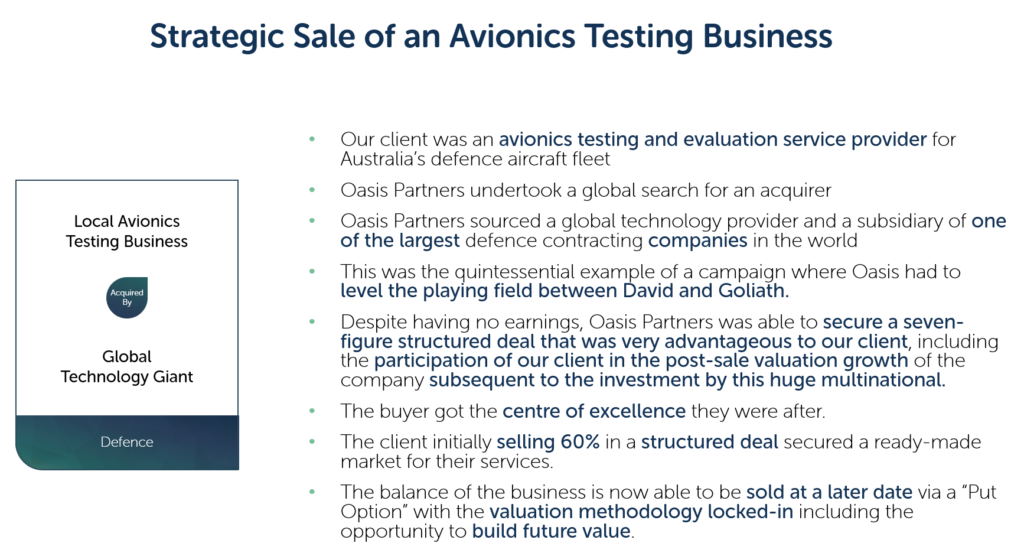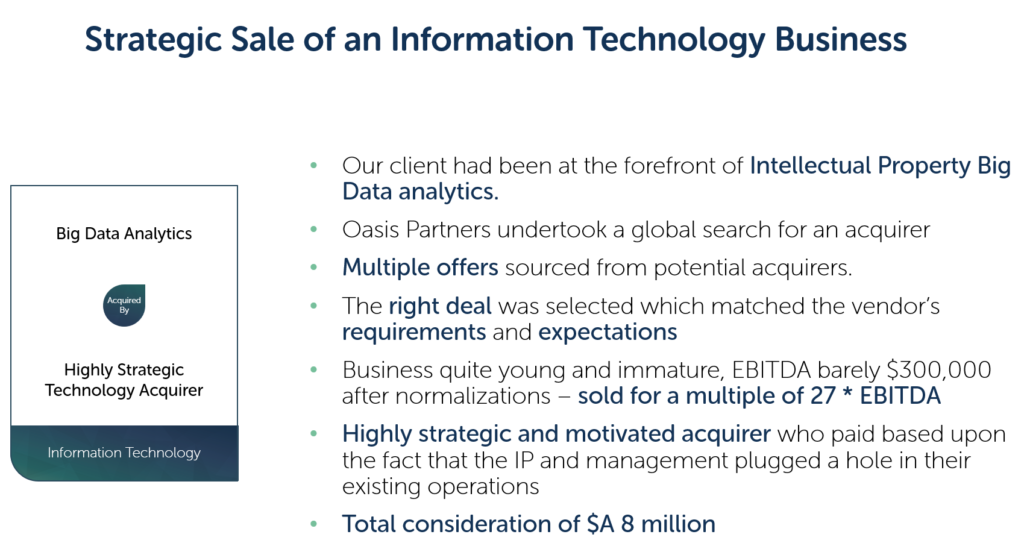- 31 January 2023
- Michael McGrath
How to Sell a Business if you’re not Making a Profit?
Businesses in Australia make an average profit of just under 10% of turnover. However, 20% of businesses in Australia don’t make any profit, that’s about 200,000 companies! In Lesson #6 we address the very real question facing those owners who are not making any profit, is my business worth anything?
Businesses are often valued based upon a multiple of their earnings, referred to as the PE ratio (price to earnings ratio). Earnings are defined in various ways, but EBITDA (earnings before interest, tax, depreciation, and amortisation) is the most frequently used. This articulates a basis to assess the future cash flows available to a new owner. There are other methodologies such as a DCF (discounted cash flow) which again helps assess the future cash flows available to an owner, and many more to boot.
The accounting profession has sought to make a science out of valuing a business. In reality, valuations are more akin to an art. If you don’t believe me spend a few hours looking at valuations on the ASX. If you’re still not convinced come and visit our offices – we won’t need long to convince you!
When a buyer buys a business, they are simply seeking to own the future cash flows of the business. So why all the focus on historical earnings? Well history is one basis to assess what might happen in the future. Once the buyer has assessed the current maintainable earnings (the underlying normalised earnings considering one-off or extraordinary income or expenses), they will then need to assess how many years forward they might pay to own those earnings – hence the PE multiple. The average forward PE on the ASX is currently 17.5.
So, if a business makes zero or has negative earnings, is it therefore worth nothing? The short answer is without doubt, no. However, the market of potential buyers probably shrinks.
Without the prospect of predictable future cash flows you are relying on the assets in the business being attractive to the buyer beyond their ability to generate profit. Other companies in the same or adjacent sector might see tremendous value in the companies’ customers. Maybe they can leverage those customer relationships in relation to their existing business. Maybe the products or the services have some important IP and benefit to the buyer’s company that could save them time and money through ownership. Often a company in and around the same space as a vendor can recognise cost synergies that if applied to the business could see it make a profit once duplicate costs are removed.
If the business is in the same space, removing a competitor can have value. So too can bringing parts of the operation or product manufacture in-house, resulting in the gross profit, with some light adjustments, falling through to the bottom line for the buyer.
We have seen these deals get done regularly, they must obviously be genuinely strategic in nature and are often referred to as trade deals, because a buyer already in the trade is far less likely to be put off by poor numbers. When done well these deals can be lucrative for a vendor and extremely beneficial for a buyer.
Here are two examples of such deals:


We have many more examples of strategically motivated deals resulting from matching an acquirer’s specific criteria with the particular features of a business which meet some or all of the buyer’s needs. A word of warning; rarely are these deals done quickly or easily, and almost never do these buyers come knocking on the door. Matching a vendor, where the business is not showing earnings, typically demands a thorough sweep of the market. If an owner is approached by a potential buyer, and it looks promising, then we think the vendor should still consider obtaining some representation to test the interest, help negotiate the terms and guide you through the process towards a successful completion.
As the saying goes, ‘a business is worth whatever a buyer is prepared to pay for it’.
Good Luck and Stay Safe.
Read Lesson #5 here: Does the Size of my Business Matter to Buyers?


